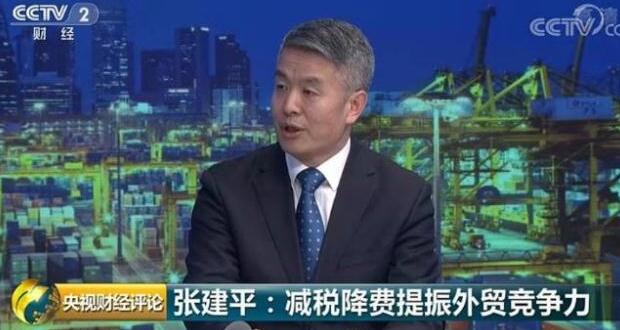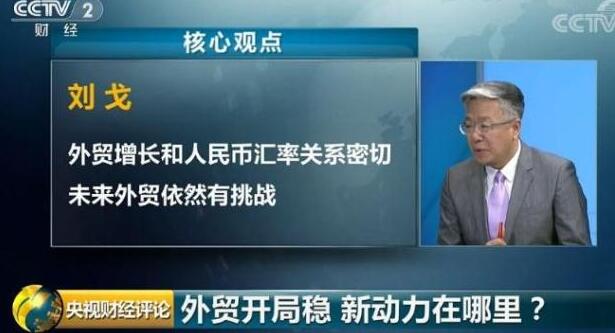CCTV News:The General Administration of Customs released data on April 12th. In the first quarter, the total import and export value of China’s goods trade was 7.01 trillion yuan, up 3.7% year-on-year, achieving a smooth start. Specifically, in March this year, China’s foreign trade import and export was 2.46 trillion yuan, an increase of 9.6%, which effectively boosted the overall growth rate of foreign trade in the first quarter. What are the new highlights of new foreign trade data? How to improve the quality of foreign trade steadily to a new level?
What’s the new change in foreign trade data?
News link:
In the first quarter, the total import and export value of China’s goods trade was 7.01 trillion yuan, up 3.7% year-on-year, achieving a smooth start.
Specifically: the export was 3.77 trillion yuan, a year-on-year increase of 6.7%;
Imports were 3.24 trillion yuan, up by 0.3%;
The trade surplus was 529.67 billion yuan, an increase of 75.2%.
Among them, China’s export growth rate exceeded expectations in March, achieving double-digit growth.
Zhang Jianping: Market demand promotes private enterprises to become the main force of stable foreign trade
Zhang Jianping, Director of the Regional Research Center of the Research Institute of the Ministry of Commerce: The foreign trade started smoothly in the first quarter, and the export in March exceeded expectations. I think the important reason is the demand of the international market. In this process, private enterprises played a major role, because the total import and export volume of private enterprises accounted for 40% of the total foreign trade volume, making a great contribution.
In addition, the foreign trade of countries related to the "Belt and Road" is also steadily advancing. In the first quarter, China’s import and export to the EU increased by 11.5% year-on-year, which was higher than the overall trade growth rate.
Liu Ge: The "Belt and Road" construction promotes the diversification of China’s trading partners and promotes the growth of foreign trade
Liu Ge, financial commentator of CCTV: Many careful China tourists will have a profound experience when they go abroad. Five or six years ago, we may have seen advertisements of China enterprises mostly in airports and other places, but now it is easy to see advertisements of China products on many city streets in many countries related to the Belt and Road Initiative, and the promotion of corporate brands is more vigorous. In the first quarter of this year, China’s import and export to Central and Eastern European countries maintained a relatively high growth rate year-on-year, and the proportion of imports and exports to Latin America and Africa reached 7% and 4.6% respectively, both of which increased year-on-year.
How to improve foreign trade to a new level?
News background:
The person in charge of the Ministry of Commerce recently said that the following measures should be taken to stabilize foreign trade this year:
First, we must stabilize the market, expand 30 key overseas markets, support the construction of international marketing networks, promote the development of cross-border e-commerce, and give enterprises more room for development.
Second, we must stabilize confidence, implement eight measures to stabilize foreign trade, and reduce burdens for enterprises in taxation, finance, and facilitation.
Third, we should improve quality and increase the export of high-tech, high-quality and high value-added products.
Zhang Jianping: Reducing taxes and fees to boost foreign trade competitiveness

Zhang Jianping, Director of the Regional Research Center of the Research Institute of the Ministry of Commerce: Behind the foreign trade data in the first quarter, China began to introduce a series of measures to stabilize foreign trade last year, such as simplifying administration and decentralization, improving the business environment, promoting the construction of the Pilot Free Trade Zone, and reducing taxes and fees. Coupled with the recent initiatives to promote the development of the real economy, these have given enterprises confidence. However, I also remind entrepreneurs that in the face of some uncertain international economic situation, we should not take it lightly, because the monthly and quarterly data of foreign trade are highly volatile. We should stabilize foreign trade, improve quality while maintaining stability, increase the core competitiveness and enhance the added value of products for foreign trade enterprises, and in addition, enterprises should actively explore the markets of countries related to the "Belt and Road" and take precautions.
Liu Ge: The confidence of private enterprises is the key to improving the quality of foreign trade.
Liu Ge, financial commentator of CCTV: The recent introduction of a series of measures to reduce taxes and fees has greatly helped the development of private enterprises, which are full of confidence. In the future, by increasing investment in research and development and continuing to promote innovation and product upgrading, they will be more competitive in the market. The stability of private enterprises is the key to improving the quality of foreign trade.
News link:
China’s foreign trade exports are improving steadily. At present, the export volume of mechanical and electrical products has accounted for nearly 60% of China’s total exports, which is three times that of labor-intensive products such as clothing and textiles. According to the data of the General Administration of Customs, China’s exports of computer equipment, metalworking machine tools and automobiles increased by 10.5%, 26.5% and 15.1% respectively in the first quarter.
Zhang Jianping: Stabilizing foreign trade requires a multi-pronged approach.
Zhang Jianping, Director of the Regional Research Center of the Research Institute of the Ministry of Commerce: The next step to stabilize foreign trade should be multi-pronged, because the factors of global market fluctuation are very complicated, such as the process of Brexit.
From the point of view of stabilizing foreign trade, it is necessary to strike a hard iron and maintain its foreign trade competitiveness. This requires a variety of policy support. For example, the Pilot Free Trade Zone is a new growth point of foreign trade, and it is necessary to gradually accelerate the replication and promotion of relevant trade facilitation policies in the Pilot Free Trade Zone. In addition, it is necessary to deepen measures to reduce taxes and fees, improve the business environment, and take various measures to help our foreign trade enterprises develop and form stronger market competitiveness.
Liu Ge: The growth of foreign trade is closely related to the RMB exchange rate. There are still challenges in foreign trade in the future.

Liu Ge, financial commentator of CCTV: Foreign trade growth is closely related to RMB exchange rate. Recently, the International Monetary Fund lowered its forecast for global economic growth this year, which mentioned the uncertainty of global trade situation. Therefore, there are still challenges for foreign trade enterprises in the future.